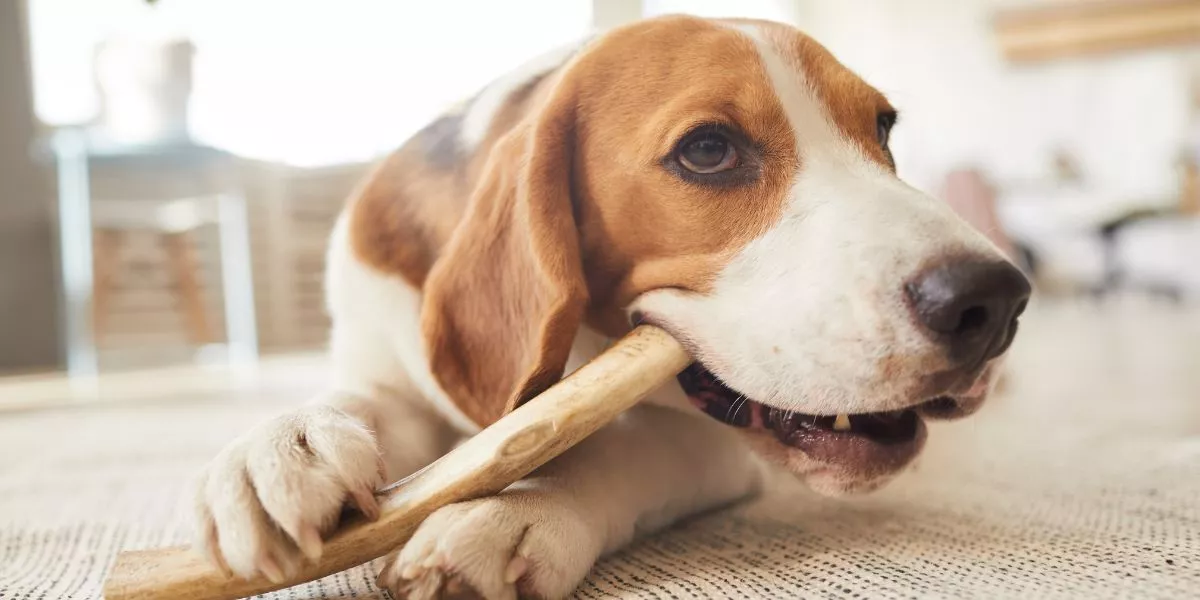
You may have noticed your furry companion's penchant for chewing on items around your house, causing frustration and potentially damaging your belongings. Understanding why dogs engage in this behavior is key to addressing it effectively. By exploring the underlying reasons for their chewing habits, you can implement targeted strategies to prevent this destructive behavior. From teething to boredom, various factors contribute to your dog's need to chew. Stay tuned to discover practical tips on how to redirect their chewing tendencies towards more appropriate outlets.
Common Reasons for Chewing Behavior
If your dog is chewing on objects around your home, it's likely due to a combination of teething, boredom, and exploration. Teething puppies often chew to relieve discomfort as their adult teeth come in. Providing appropriate chew toys can help redirect this behavior.
Boredom can also drive your dog to seek entertainment through chewing. Ensuring your dog gets enough physical exercise and mental stimulation can help curb this habit. Additionally, dogs explore the world with their mouths, so they may chew to learn about their environment. Supervising your dog and puppy-proofing your home can prevent them from getting into trouble.
Understanding these underlying reasons for chewing can help you address the behavior effectively. By providing suitable alternatives, engaging your dog in activities, and creating a safe environment, you can help prevent destructive chewing and foster a positive relationship with your furry friend.
Impact of Chewing on Your Dog
Chewing behavior in dogs can have various impacts on their well-being and your home environment. For your furry friend, regular chewing can help maintain healthy teeth and gums by reducing plaque and tartar buildup. It also provides mental stimulation and can be a coping mechanism for stress or anxiety. However, excessive chewing or chewing on inappropriate items can lead to potential health risks like dental damage, intestinal blockages, or poisoning if they ingest harmful substances.
Moreover, the impact of your dog's chewing extends to your home. Destructive chewing can result in damage to furniture, shoes, electrical cords, and other household items. This behavior can be frustrating and costly for you as a pet owner, requiring replacements or repairs. Additionally, a dog's chewing habits may create safety hazards if they chew on hazardous materials or ingest small objects.
Understanding the effects of chewing on both your dog and your home is crucial in addressing this behavior and promoting a harmonious living environment for you and your furry companion.
Effective Ways to Prevent Chewing
Wondering how you can effectively prevent your dog from destructive chewing behaviors? Here are some practical ways to help curb this unwanted habit.
First, provide your dog with appropriate chew toys to redirect their chewing behavior. Toys like rubber toys, nylon bones, or puzzle toys can keep them entertained and satisfy their natural urge to chew. Additionally, make sure your dog gets enough physical and mental exercise to prevent boredom, which is often a trigger for excessive chewing. Regular walks, playtime, and training sessions can help expend their energy in a positive way.
Another effective method is to puppy-proof your home by removing any items that are tempting for your dog to chew on. Keep shoes, clothes, and other personal belongings out of reach, and use pet gates to restrict access to certain areas. Consistency is key when correcting chewing behavior, so be sure to praise and reward your dog when they chew on their toys instead of household items. With patience and persistence, you can help your dog learn appropriate chewing habits and prevent damage to your belongings.
Training Techniques for Behavior Modification
To modify your dog's chewing behavior effectively, consider implementing positive reinforcement training techniques. Positive reinforcement involves rewarding your dog for good behavior, encouraging them to repeat those actions. When your dog chews on appropriate items like toys instead of furniture or shoes, immediately praise and reward them with treats or affection. Consistency is key in training your dog, so make sure to provide positive reinforcement every time they chew on the correct items.
Another effective training technique is redirection. When you catch your dog chewing on something they shouldn't, calmly take the inappropriate item away and replace it with a suitable chew toy. By redirecting their focus to the proper item, you're teaching them what's acceptable to chew on.
Additionally, consider incorporating obedience training into your routine. Teaching commands like 'leave it' or 'drop it' can help deter unwanted chewing behavior. Training sessions should be short, frequent, and positive to keep your dog engaged and motivated to learn. With patience, consistency, and the right training techniques, you can successfully modify your dog's chewing behavior.




